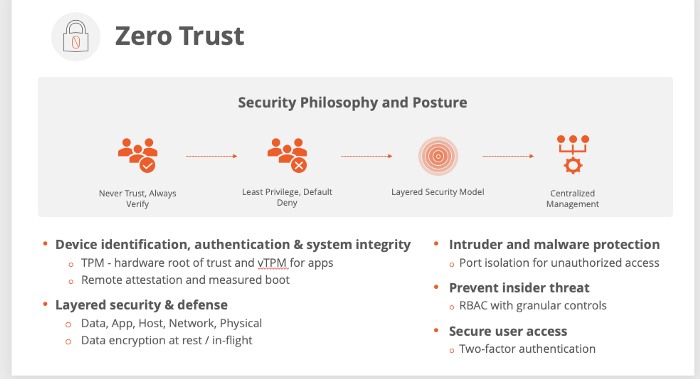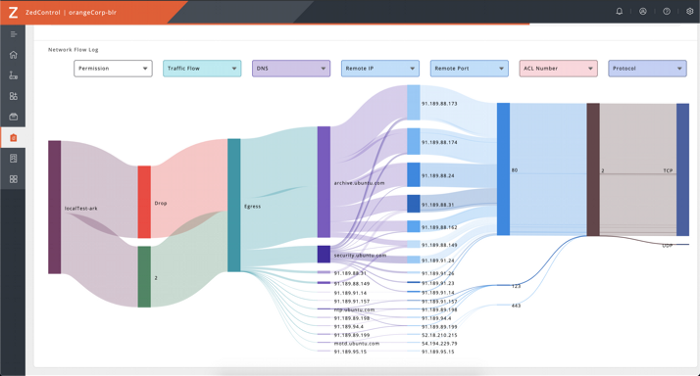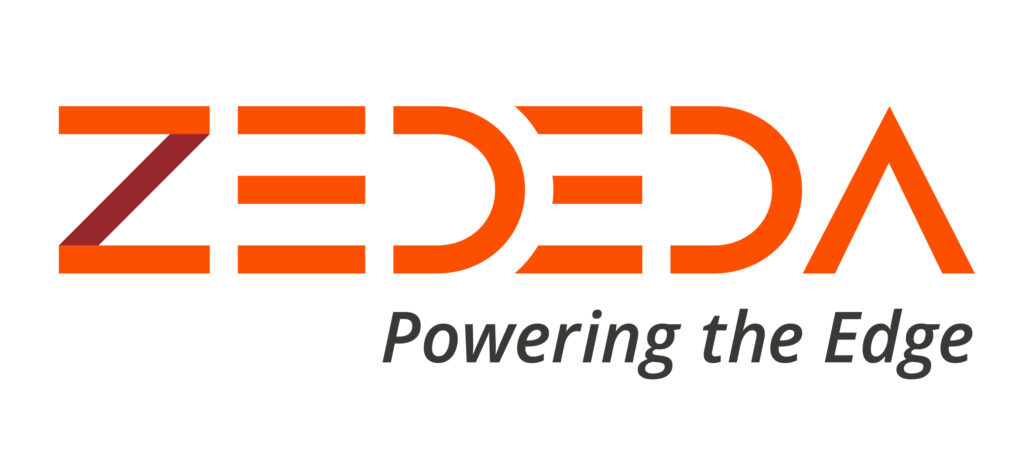
The computing landscape has long observed a swing between centralized and distributed architectures, from the mainframe to client-server to the cloud. The next generation of computing is now upon us, representing both a return to the familiar distributed model and a breakthrough in rethinking how we handle data. Many of the security lessons we’ve learned from past paradigms are applicable, yet the edge also brings unique challenges. In part 1 of this blog series, we covered some of the characteristics that make security different at the edge compared to the cloud. In this blog, we’ll be going over ten baseline recommendations for securing IoT edge deployments.
1. Embrace a zero-trust mindset. Coined by former Forrester analyst John Kindervag, the “zero trust” mindset is rooted in the assumption that the network is hostile. This means that every individual or device — inside or outside of the network perimeter — trying to access the network must be authenticated and all downloaded updates verified, because nothing can be trusted.

Key principles of zero trust security
2. Build upon a trust anchor. At the foundation of your security approach should be a trust anchor in your edge devices based on a root of trust at the silicon level (e.g., Trusted Platform Module, or TPM). Due to fragmentation in edge hardware, as much support as possible for this trust anchor should be abstracted into the software layer and exposed to your applications through APIs. This trust anchor should be the foundation for key functions such as device identification and authentication, secure and measured boot, encryption, application updates, and so forth.
3. Eliminate local access. The massive distributed denial of service (DDoS) attack that leveraged the Mirai botnet and took down a portion of the internet in 2016 involved millions of cameras that shared a very small number of common credentials. Back during the setup of these devices, their credentials either could not be changed or were not changed because it was easier to use the factory default. What can we take away from this incident? Rather than relying on field technicians or end users to change and manage countless edge device passwords, leverage solutions that automatically create and store credentials in the trust anchor based on a unique device ID during a zero-touch provisioning process. Field technicians should then only be able to access the device through a central controller. Additionally, establish the ability to set policies in your network that allow you to remotely disable any unused physical ports on edge devices in order to prevent unauthorized installation of software.
4. Protect data at rest and in motion. Leveraging the key provided by your trust anchor, encrypt data both at rest on your edge devices and in motion across the network. Deploy compute immediately upstream of resource-constrained edge devices and legacy systems to encrypt data when they aren’t capable of doing it themselves.
5. Maximize visibility. With a growing number of devices at the periphery of your network, it’s more important than ever that you have full visibility into user activity, device location and status, and the routes your data is traveling between devices and your on-prem and cloud systems. Be sure to regularly review role-based access to make sure only the users who need access have it, and that this access is based on real-time context as part of your zero-trust strategy.

Network flow log in ZEDEDA’s controller
6. Be vigilant, but accommodating, with patches. The U.S. Department of Homeland Security estimates that as many as 85 percent of targeted attacks are preventable due to exploitation of unpatched software. These updates need to be signed from a trusted authority and verified by the private keys stored in your edge devices. Given the implications of downtime in an operational technology (OT) environment, it’s important to enable the scheduling of vulnerability updates during maintenance windows. Also key is to have rollback capabilities in the event of failed updates, so that devices aren’t bricked in the field, which can take down a mission-critical process or result in an expensive trip to a remote location. Software should have extended support, offering the ability to patch applications and underlying runtime for 5 to 7 (or more) years.
7. Deploy active threat analytics. Consider solutions that leverage machine learning to assess the steady state of your deployments and alert for anomalies, whether it be unusual network activity, signs of malware, or other indicators. For example, had active threat analytics been applied at the edge in the 2016 Mirai attack, the unusual network traffic could have been addressed at the source rather than snowballing into a much bigger problem. Consult with experts that understand the unique needs of OT-specific protocols — this includes defining what normal behaviors are and how to gracefully shut down processes in the case of any detected attack.
8. Leverage purpose-built, open frameworks. It takes a village to develop and deploy IoT and edge computing solutions, with multiple different parties coming together spanning the necessary technologies and domain expertise. It’s key to invest in tools for securing and managing your infrastructure that are consistent regardless of the applications and domain expertise applied on top. Leveraging purpose-built, open edge orchestration frameworks that support cloud-native development and have clearly-defined APIs provides a transparent mechanism for getting all stakeholders on the same page, regardless of the combination of ingredients used in a given deployment.
9. Prioritize usability. It’s important to strike a balance between locking a solution down and making it usable across the various stakeholders involved. Many of the breaches we hear of in the consumer space happen because developers prioritized instant gratification and usability over security. This is where capabilities such as zero-touch provisioning are key, eliminating the need for expertise and awareness to securely onboard devices.
10. Practice defense in depth. Security is about defense in depth, applying the right tools in layers based on security posture and risk. This includes utilizing segmentation when possible — while a zero-trust mindset eliminates a perimeter-based focus, micro-segmentation is still important to isolate critical networks and devices, especially legacy systems. Further augment your zero trust model with distributed firewall software to govern access across nodes on internal networks.
Not all edges are created equally; for organizations looking to implement edge computing, it’s important to first understand the unique challenges of securing and managing computing located outside of the confines of a traditional data center. However, adopting a distributed model for compute efficiency doesn’t need to bring tradeoffs in security. Being aware of the considerations that exist at the edge will help organizations be better equipped to protect field deployments and reap the benefits of edge computing. At ZEDEDA, we build off of a foundation that considers all the points above to enable enterprises to securely orchestrate IoT edge deployments with their preferred devices, applications and clouds.




